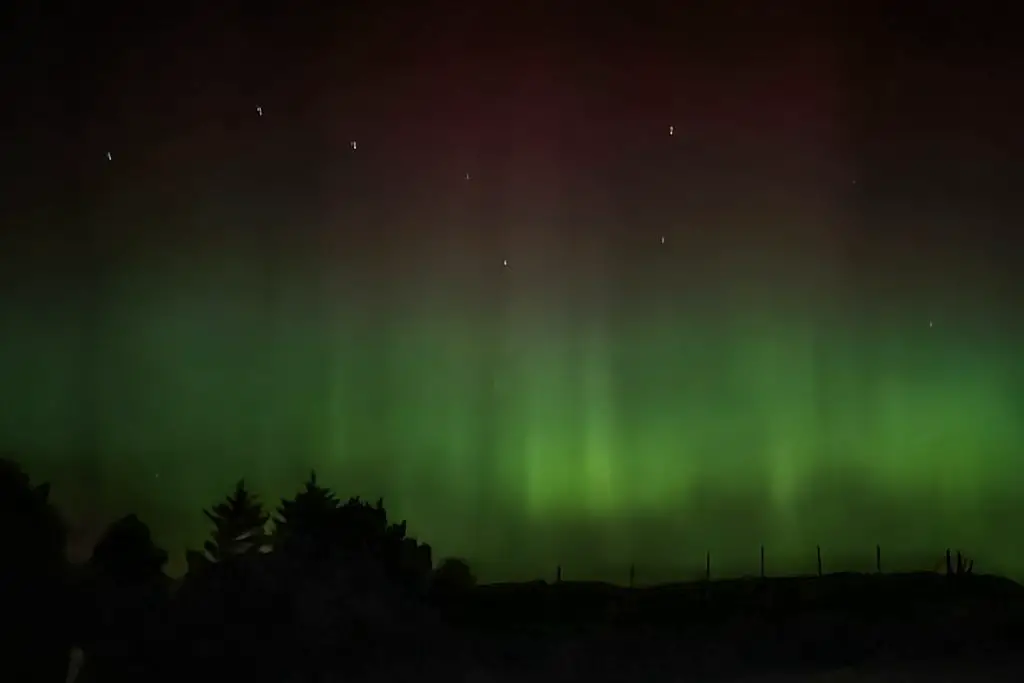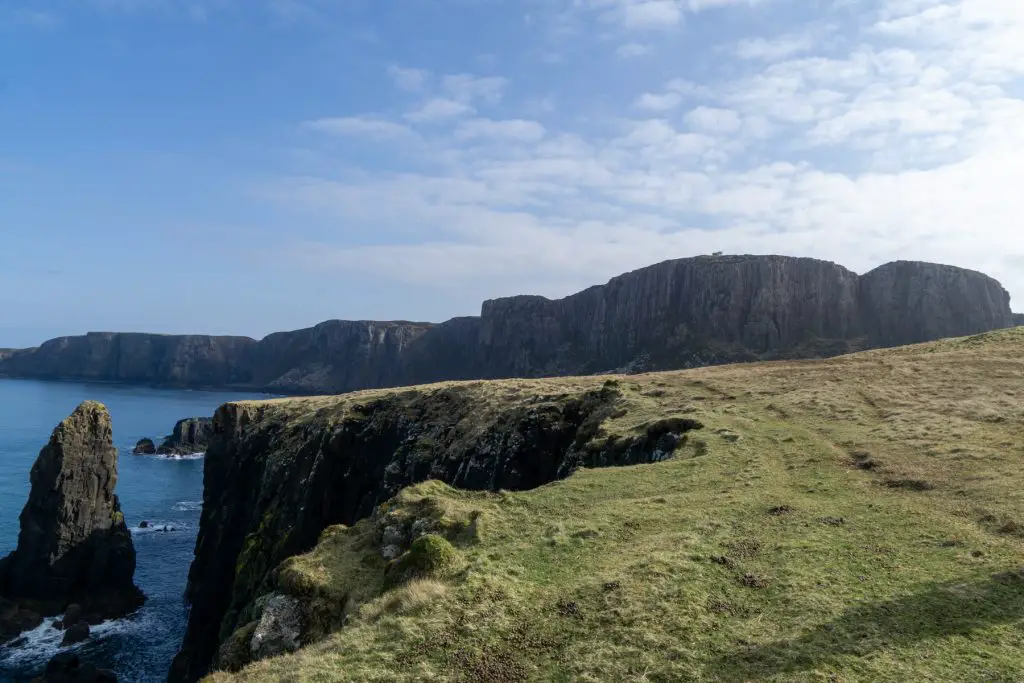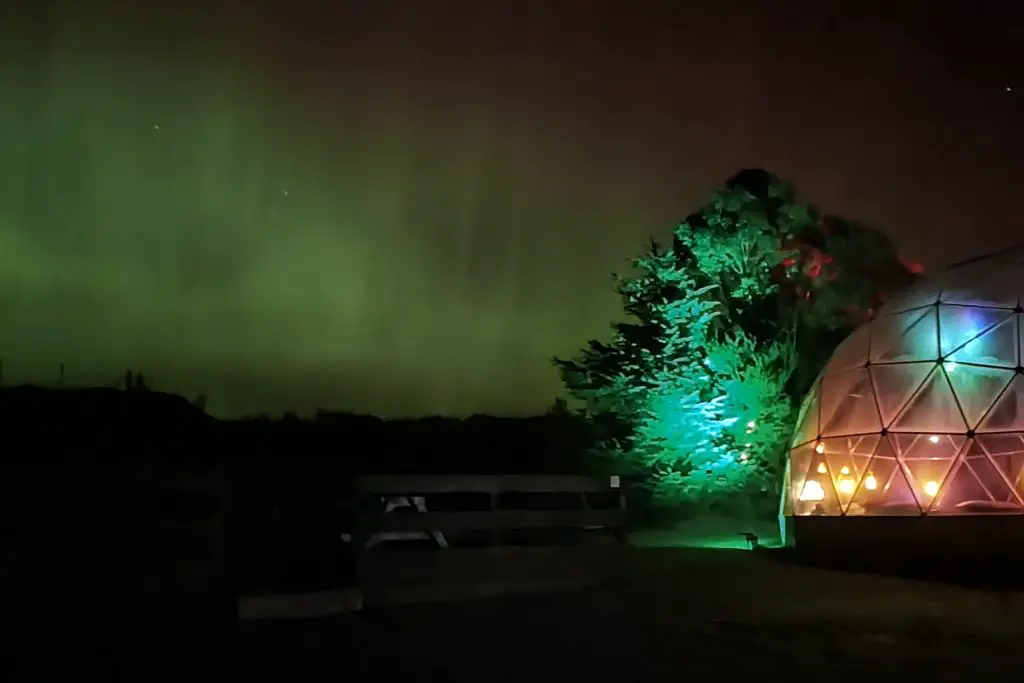The Isle of Skye, just off the west coast of mainland Scotland, is known for its dark skies. With little light pollution, it is a wonderful place to witness the aurora borealis.
Seeing the northern lights on the Isle of Skye is nothing short of a bucket list experience. But, catching these merry dancers can be difficult, especially if you don’t know what time of year you can see them.
This guide to spotting the aurora borealis on the Isle of Skye will tell you everything you need to know to heighten your chances of seeing them, including the ideal viewing conditions, where to find the forecast and what time of year yields the best light displays.
Read more: (opens in new tab)
- Where to Stay on the Isle of Skye
- Visiting the Isle of Skye During Winter
- Hiking to the Fairy Pools, Isle of Skye
Isle of Skye Northern Lights – Insider Guide
This post contains affiliate links. If you use them, I will receive a small commission at no extra cost to you.
What are the Aurora Borealis (Northern Lights)?
The northern lights are one of the finest examples of nature’s magic. Sometimes called ‘polar lights’, they are a natural phenomenon which sees waves of different coloured lights dance across the sky. The lights can appear blue, red, green, purple, pink, orange and yellow, and shift their shape.
They happen when energised particles from the sun collide with gases in the earth’s upper atmosphere, exciting the atoms and causing them to glow.
In the northern hemisphere, this phenomenon is called the aurora borealis (northern lights). In the southern hemisphere, it is called the aurora australis (southern lights).
When to See the Northern Lights on the Isle of Skye
The first thing to realise about seeing the Northern Lights is that nothing is ever guaranteed! This natural phenomenon is hard to predict and witnessing it relies on a very specific set of conditions.
Like much of Northern Scotland and the wider Scottish Highlands, the Isle of Skye sits very far north. This means that the hours of daylight vary massively depending on when you visit. To stand a chance of seeing the northern lights on the Isle of Skye, you will need to visit during autumn or winter (September to March).
You can’t see the northern lights during June or July on the Isle of Skye due to astronomical twilight. Essentially, this means that the skies don’t get dark enough during these months.

Isle of Skye Northern Lights Forecast
Visiting the Isle of Skye at the right time of year is the first step to seeing the northern lights. The second is to make sure you know if they are happening and if so, whether they will be visible where you are.
There are a number of apps and websites that track solar activity and can alert you if there is a chance of seeing them in your area.
For the Isle of Skye specifically, you should check out the Glendale App (Aurora Alert App). Allow alerts and notifications to heighten your chances of witnessing this natural wonder. You can set your location, meaning you’ll only get notifications relevant to you.
If you’re on Facebook, make sure to check out the Glendale Skye Auroras Facebook page which regularly posts updates on aurora activity and shares incredible photos of the phenomenon. Both the Facebook page and the above app have been created by Andy Stables, the resident northern lights expert on Skye.

Best Aurora Borealis Viewing Conditions
Even if there is really strong solar activity forecast, you won’t stand a chance of seeing the northern lights unless the viewing conditions play ball. You’ll need a clear night with no cloud cover and you’ll also need to be somewhere away from light pollution to ensure a dark sky.
Best Places to See the Aurora Borealis on the Isle of Skye
The Isle of Skye has several dark sky areas which are great for catching the Northern Lights. Here are some of the best places to see them on the island:
- Glendale
- Neist Point
- Rubha Hunish
- Kinloch Forest
- Trumpan Church
- Kylerhea

While these are a few of the top locations, you can see the aurora borealis anywhere on Skye as long as you are far from street lights and light pollution.
Other great places to see the northern lights in Scotland include the Shetland Islands, Lewis and Harris, Cairngorms National Park, Rannoch Moor, Orkney Islands, Moray Coast and Galloway Forest Park (the first Dark Sky Park in the United Kingdom).
Photographing the Northern Lights
The northern lights are not always visible to the naked eye. To see the full range of colours, you will need to photograph them using a long exposure setting. This is available on newer iPhone and Android smartphones. A tripod is recommended to keep your phone or camera steady.
If you have a camera, you’ll need to manually input the settings. For recommended aperture and shutter speed, plus more tips to help you take amazing northern lights photos, check out this post.

Big thanks to Brian at Skyewalker Hostel for the northern lights photos!
Isle of Skye Northern Lights FAQ
Can you see the northern lights with the naked eye?
Yes, you can see the northern lights with the naked eye. They usually appear as an ethereal white or green, shimmering ahead of the night sky. In cases of particularly strong aurora, it is also possible to see more colours such as red and pink.
How long do the northern lights last?
Most aurora borealis light shows last somewhere between 15 and 30 minutes. However, they can go on all night!
How do you guarantee to see the northern lights?
There is no way to guarantee seeing the northern lights as they are a natural spectacle. To heighten your chances of spotting them, make sure to keep an eye on the northern lights forecast and hope for clear skies!
Why are you not supposed to look at the northern lights?
There were once loads of myths surrounding the northern lights which varied country by country. For example, in Iceland, it was believed that the northern lights could ease the pain of childbirth, however, if the mother looked at them while pregnant, her child would be born cross-eyed.
Isle of Skye Accommodation
If you’re visiting the Isle of Skye to try and catch the northern lights, consider one of the following accommodation options, all of which are open year-round.
Share your experience chasing the northern lights on the Isle of Skye in the comments below!


